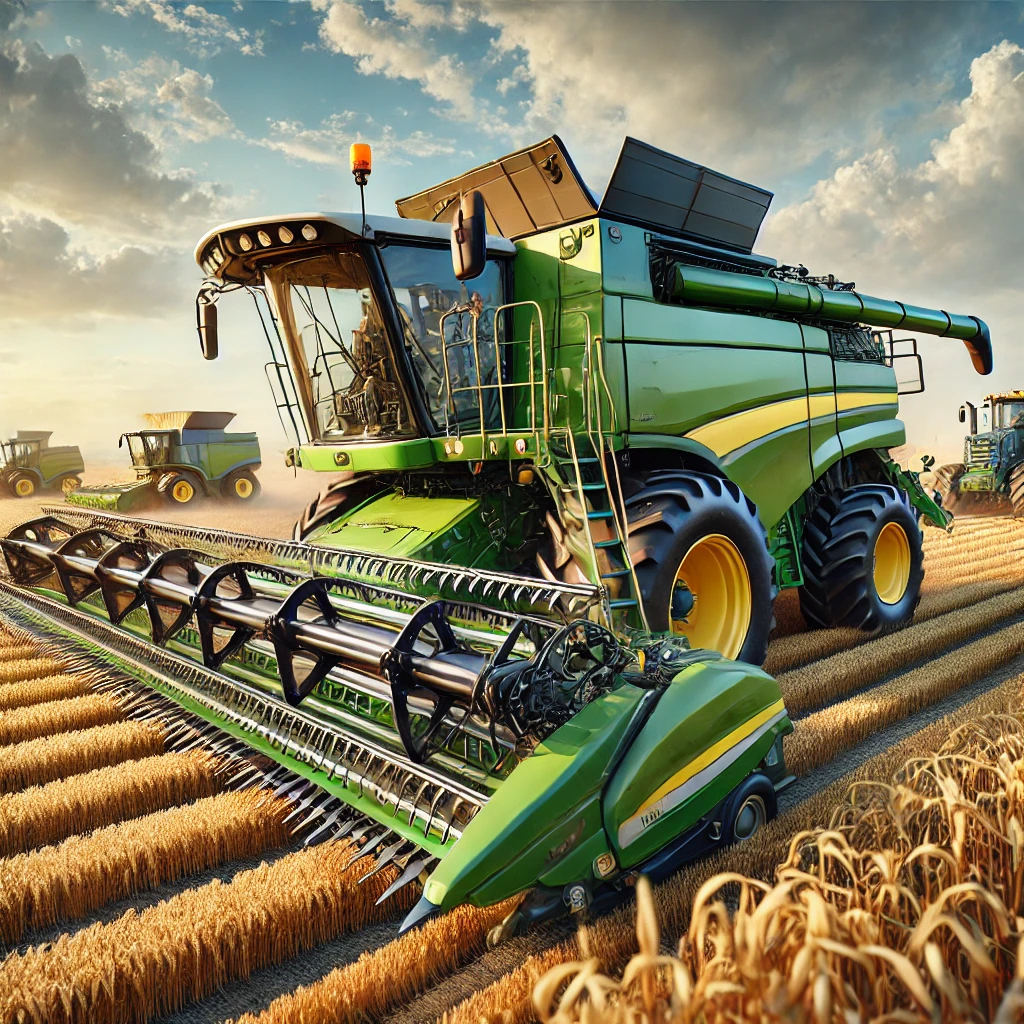Tractors are indispensable machines in modern agriculture, playing a crucial role in various farming operations. This guide aims to provide beginners with a comprehensive understanding of different types of tractors and their specific uses, helping them make informed decisions for their agricultural needs.
Types of Tractors
Utility Tractors
Utility tractors are versatile machines designed for a wide range of agricultural tasks. They are typically used for plowing, tilling, and hauling equipment. These tractors are known for their durability and ability to handle various attachments, making them ideal for small to medium-sized farms.
- Plowing: Utility tractors can be equipped with plows to prepare the soil for planting.
- Tilling: These tractors can also be used with tillers to break up and aerate the soil.
- Hauling: With the right attachments, utility tractors can transport materials such as hay, feed, and equipment.
Row Crop Tractors
Row crop tractors are specifically designed for planting and cultivating crops that are grown in rows, such as corn, soybeans, and cotton. These tractors are equipped with adjustable wheel spacing to accommodate different row widths and are often used with precision farming equipment.
- Planting: Row crop tractors can be fitted with planters to ensure accurate seed placement.
- Cultivating: These tractors can also be used with cultivators to control weeds and maintain soil health.
- Harvesting: With the appropriate attachments, row crop tractors can assist in harvesting operations.
Compact Tractors
Compact tractors are smaller and more maneuverable than utility tractors, making them ideal for tasks in confined spaces or on smaller properties. They are commonly used for landscaping, gardening, and light agricultural work.
- Landscaping: Compact tractors can be used with mowers, loaders, and backhoes for various landscaping tasks.
- Gardening: These tractors are perfect for tilling and maintaining garden plots.
- Light Agricultural Work: Compact tractors can handle small-scale plowing, planting, and harvesting.
Specialized Tractors
Orchard Tractors
Orchard tractors are designed for use in orchards and vineyards, where space between rows of trees or vines is limited. These tractors are narrow and low-profile, allowing them to navigate tight spaces without damaging crops.
- Pruning: Orchard tractors can be used with pruning attachments to maintain trees and vines.
- Spraying: These tractors can be equipped with sprayers to apply pesticides and fertilizers.
- Harvesting: Orchard tractors can assist in the harvesting of fruits and grapes.
Industrial Tractors
Industrial tractors are built for heavy-duty tasks in construction, mining, and other industrial applications. They are robust and powerful, capable of handling large loads and operating in harsh conditions.
- Construction: Industrial tractors can be used with loaders, backhoes, and other attachments for construction work.
- Mining: These tractors are often used in mining operations to transport materials and equipment.
- Heavy Lifting: Industrial tractors can handle heavy lifting tasks with the appropriate attachments.
Garden Tractors
Garden tractors are smaller than compact tractors and are designed for residential use. They are ideal for mowing lawns, tilling gardens, and performing light landscaping tasks.
- Lawn Mowing: Garden tractors can be equipped with mowing decks to maintain lawns.
- Garden Tilling: These tractors can be used with tillers to prepare garden beds.
- Light Landscaping: Garden tractors can handle small-scale landscaping projects with the right attachments.
Choosing the Right Tractor
Assessing Your Needs
When choosing a tractor, it is essential to assess your specific needs and the tasks you will be performing. Consider the size of your property, the types of crops you are growing, and the attachments you will need. This will help you determine the type and size of tractor that will best suit your requirements.
Budget Considerations
Your budget will also play a significant role in your decision. Tractors can vary widely in price, depending on their size, features, and capabilities. It is important to balance your needs with your budget to find a tractor that offers the best value for your investment.
Maintenance and Support
Regular maintenance is crucial to keep your tractor in good working condition. When choosing a tractor, consider the availability of parts and service support in your area. Opting for a well-known brand with a reliable service network can save you time and money in the long run.
Conclusion
Understanding the different types of tractors and their uses is essential for making informed decisions in agriculture. Whether you are a small-scale farmer or managing a large agricultural operation, selecting the right tractor can significantly impact your productivity and efficiency. By assessing your needs, considering your budget, and ensuring proper maintenance, you can choose a tractor that will serve you well for years to come.
